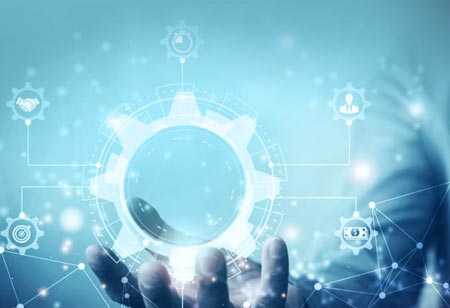THANK YOU FOR SUBSCRIBING
Role-Enhancing Digital And AI Technologies That Ensure Job Security
The pandemic and its economic effects have interrupted people's daily routines, creating several problems, such as the Great Resignation Wave and overhiring.

By
Apac CIOOutlook | Monday, October 17, 2022
Stay ahead of the industry with exclusive feature stories on the top companies, expert insights and the latest news delivered straight to your inbox. Subscribe today.
The pandemic and its effects on the economy have disturbed daily life and created a number of problems, including the Great Resignation Wave and overhiring.
FREMONT, CA: The pandemic and its economic effects have interrupted people's daily routines, creating several problems, such as the Great Resignation Wave and overhiring. In this setting, increased job security is crucial to enable highly skilled human workers to manage tasks machines cannot complete. One method to overcome the skills gap and guarantee job stability without affecting business operations is to foster a supporting ecosystem supported by the appropriate technologies.
Implementing artificial intelligence (AI) and digital technologies at work is a way to fill skill gaps and future-proof operations. This will increase productivity and work quality, both of which are essential for job satisfaction. Employees that use automation at work can focus on more mission-critical duties, save time, and gain additional skills to meet changing market demands.
Additionally, automation solutions take up significant time workers could otherwise devote to learning and enhancing the quality of their work. Organisations must identify areas for improvement to strengthen the roles of human workers as they collaborate with the digital workforce.
The following key ways that AI and digital technology can improve operations and increase job security are listed below.
Reimagine Roles for Resilience
Utilising AI for automation can lighten the load on staff and make roles more useful. Automation has been highlighted as a crucial go-to strategy, according to a recent AppDynamics poll of 6000 participants who were global IT leaders. Tata Consultancy Services reported another intriguing finding, stating that approximately 46 per cent of large organisations' IT staff use AI in their work. When interacting with the digital workforce, humans can work more effectively. Software robots can help people identify methods to work more effectively, save time for skill-upskilling, and complete tasks on time.
There are other roles and use cases for AI and automation in IT, which is only the tip of the iceberg. Predicting client sentiment would be another intriguing scenario. On social networking sites and emails, younger consumers share their thoughts on businesses and their interactions with them. AI is required to use machine learning and natural language processing (NLP) in this situation. NLP transforms the natural human language into machine-readable formats, which also determines the words' meanings. Machine learning then finds patterns in the data to help determine the customers' feelings and sentiments.
Enhanced Job Satisfaction
Contrary to popular belief, technology does not replace people as employees. Finding and applying the appropriate technologies provides employees a tremendous advantage and allows them to achieve at levels they could never have imagined. The organisation gains from resource optimization, waste reduction, risk prediction, and uncertainty management with the correct technology.
Because of the benefits of technological integration, workers have more influence over their positions and have improved job security and confidence levels. For instance, hyper-automation technologies have revolutionised the banking industry, enabling backend operations to benefit from the greatest levels of accuracy, compliance, and speed-to-solution technology. The people at work can simultaneously create targeted and original solutions to handle customers' requests.
Real-time data may improve decision-making processes, and work can be made easier by integrating diverse departments and procedures to create cutting-edge market solutions.
AI-powered workplace chatbots can be one of the pertinent instances. Chatbots that support various languages can significantly improve workers in a global, remote/hybrid working environment.





